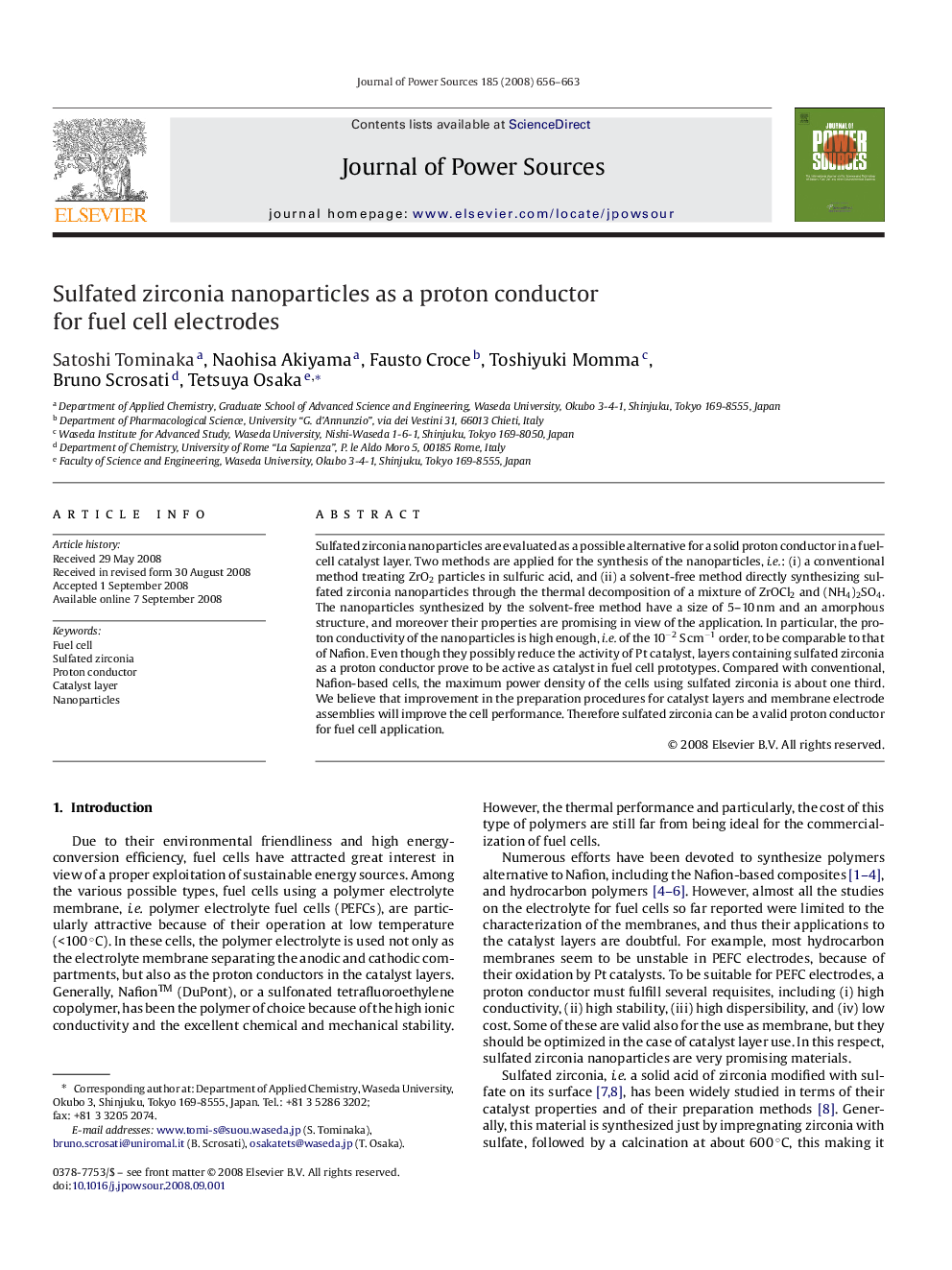| کد مقاله | کد نشریه | سال انتشار | مقاله انگلیسی | نسخه تمام متن |
|---|---|---|---|---|
| 1290164 | 973320 | 2008 | 8 صفحه PDF | دانلود رایگان |

Sulfated zirconia nanoparticles are evaluated as a possible alternative for a solid proton conductor in a fuel-cell catalyst layer. Two methods are applied for the synthesis of the nanoparticles, i.e.: (i) a conventional method treating ZrO2 particles in sulfuric acid, and (ii) a solvent-free method directly synthesizing sulfated zirconia nanoparticles through the thermal decomposition of a mixture of ZrOCl2 and (NH4)2SO4. The nanoparticles synthesized by the solvent-free method have a size of 5–10 nm and an amorphous structure, and moreover their properties are promising in view of the application. In particular, the proton conductivity of the nanoparticles is high enough, i.e. of the 10−2 S cm−1 order, to be comparable to that of Nafion. Even though they possibly reduce the activity of Pt catalyst, layers containing sulfated zirconia as a proton conductor prove to be active as catalyst in fuel cell prototypes. Compared with conventional, Nafion-based cells, the maximum power density of the cells using sulfated zirconia is about one third. We believe that improvement in the preparation procedures for catalyst layers and membrane electrode assemblies will improve the cell performance. Therefore sulfated zirconia can be a valid proton conductor for fuel cell application.
Journal: Journal of Power Sources - Volume 185, Issue 2, 1 December 2008, Pages 656–663